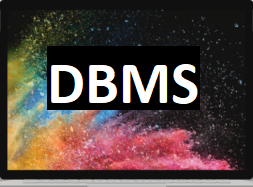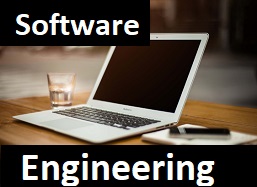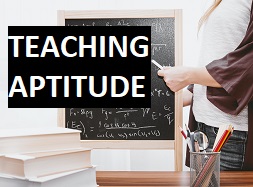
Teaching means interaction of teacher and students. They participate for their mutual benefits. Both have their own objective and target is to achieve them.
teaching is just to train the students so that they can stand on their own foot in society.

Effective teaching
->Adopt a student-centered approach.
->Teaching should stimulate thinking and develop students learning ability.
->Teachers should fulfil the needs of different learners.
->provide life-wide learning opportunities.
->Schools should strive for student autonomy in the learning
process by encouraging them to actively engage in sharing,
collaboration and exploration, thus enabling them to enjoy learning,
enhance their effectiveness in communication and develop their
creativity and sense of commitment.
Characteristics of a Effective teachers:
->clear about instructional goals.
->knowledgeable about curriculum content.
->communicate to their students.
->teach students metacognitive strategies and give them
opportunities to master them,it means processes designed for students to ‘think’ about their ‘thinking’.
->address higher- as well as lower-level cognitive
objectives
->monitor students’ understanding by offering regular
appropriate feedback.
->accept responsibility for student outcomes.
Three main aspects of teaching
1.Teacher
2.Student
3.Education
note: Ans are in bold.
Previous years Question from aspects of teaching
1. The teacher should promote—
(A) Anxiety among the students to complete the syllabus in a hurry
(B) Harassing the students for completing the work
(C) Encouraging interactive communication among students
(D) Punishment to a student whenever he puts a question
2.Teachers and parents give more importance to the development of intelligence among students as it facilitates—
(A) Academic achievement and social respectability
(B) Less risk taking behaviour
(C) Dependence behaviour
(D) Obedient behaviour
Nature and characteristics of teaching
- The main character of teaching is to provide guidance and training.
- Teaching is an interaction between teacher and students.
- Teaching is an art to giving knowledge to students with effective way.
- Teaching is a science to educate fact and causes of different topics of different subjects.
- Teaching is continuing process.
- A teacher can teach effectively if he has full confidence on the subject.
- Teaching encourages students to learn more and more.
- Teaching is formal as well as informal .
- Teaching is communication of information to students.
- Teaching is a tool to help the student to adjust himself in society and its environment.
- Intellectual activity meaningful functioning of mind
PYQS of Nature and characteristics of teaching
1. The main aim of teaching is:
(A) To develop only reasoning
(B) To develop only thinking
(C) Both (A) and (B)
(D) To give information
2. An effective teacher is one who can:
(A) control the class
(B) give more information in less time
(C) motivate students to learn
(D) correct the assignments carefully
3.Which of the following statements is most appropriate?
(A) Teachers can teach.
(B) Teachers help can create in a student a desire to learn.
(C) Lecture Method can be used for developing thinking.
(D) Teachers are born.
4.Match the following
| List I (Teaching methods) | List II (Factors helpful in making them effective) |
| (a) Expository method | (i) Trust and openness in relationship |
| (b) Investigative method | (ii) Freedom to choose a theme and scope for frank exchange of ideas |
| (c) Discussion method | (iii) Creating a challenge to address the problems |
| (d) Personalized method | (iv) Systematic, step-by-step presentation (v) Maximizing infrastructural support |
Code :
(a) (b) (c) (d)
(1) (iv) (iii) (ii) (i)
(2) (i) (ii) (iii) (iv)
(3) (ii) (iii) (iv) (v)
(4) (iii) (i) (ii) (iv)
5.What is the compulsory element of learning?
(a) Ability to read
(b) Bright Mind
(c) Tendency to know
(d) None of these.
6. If a student failed in any class what should be done to him?
(a) He should be given a chance to improve and sent to the
next class after he improves
(b) He should be kept in the same class
(c) He should be advised to leave studies
(d) All the above methods are right.
7.Why are curriculum activities used
in teaching?
(a) Make teaching easy
(b) To make teaching interesting,
easy to understand and effective
(c) To make teaching attractive
(d) To assist the teacher.
8.What are the three components of
the educational process?
(a) Education, teacher and books
(b) Teacher, student and education
(c) Teaching, learning and practice
(d) Direction, instruction and skill.
Different types of teaching Techniques
- teacher-centred methods,
- learner-centred methods,
- content-focused methods and
- interactive/participative methods.
- Demonstrative method.
INSTRUCTOR/TEACHER CENTERED METHODS:
->Here the teacher casts himself/herself in the role of being a master of the subject matter.
->The teacher is looked upon by the learners as an expert or an authority.
->Learners on the other hand are presumed to be passive and copious recipients of knowledge from the teacher.
->Examples of such methods are expository or lecture methods – which require little or no involvement of learners in the teaching process.
->It is also for this lack of involvement of the learners in what they are taught, that such methods are called “closed-ended”.
LEARNER-CENTERED METHODS
->both a teacher and a learner at the same time play role as a teacher/instructor is .
->In the words of Lawrence Stenhouse, the teacher plays a dual role as a learner as well “so that in his classroom extends rather than constricts his intellectual horizons”.
->The teacher also learns new things everyday which he/she didn’t know in the process of teaching.
->The teacher, “becomes a resource rather than an authority”. ->Examples of learner-centered methods are discussion method, discovery or inquiry based approach and the Hill’s model of learning through discussion (LTD).
CONTENT-FOCUSED METHODS
->both the teacher and the learners have to fit into the content that is taught.
->Generally, this means the information and skills to be taught are very important.
->A lot of emphasis is laid on the clarity and careful analyses of content.
->An example of a method which subordinates the interests of the teacher and learners to the content is the programmed learning approach.
INTERACTIVE/PARTICIPATIVE METHODS
->These methods are driven by the situational analysis of what is the most appropriate thing for us to learn/do now given the situation of learners and the teacher.
->They require a participatory understanding of varied domains and factors.
Source:Digital library: nzdl.org
Demonstrative method:
The word demonstration means to give demos or to perform the particular activity or concept. In demonstration method, the teaching-learning process is carried in a systematic way.
It is the best suited method for explaining by taking example and performing activities/experiment.
It is highly helpful method in technical training where practical knowledge is required.
Characteristics of Demonstrative method:
1.Teacher centric.
2.Highly controllable
3.Efficient method to visualizing what is happening.
4.It can be repeated several times in order to get accurate result while performing some experimental activities.
5.Example/Evidence can be used to demonstrate the required matter.
Between Teacher-Centered and Learner-Centered Learning
| Teacher-Centered | Learner-Centered |
| Focus is on instructor | Focus is on both students and instructor |
| Focus is on language forms and structures (what the instructor knows about the language) | Focus is on language use in typical situations (how students will use the language) |
| Instructor talks; students listen | Instructor models; students interact with instructor and one another |
| Students work alone | Students work in pairs, in groups, or alone depending on the purpose of the activity |
| Instructor monitors and corrects every student utterance | Students talk without constant instructor monitoring; instructor provides feedback/correction when questions arise |
| Instructor answers students’ questions about language | Students answer each other’s questions, using instructor as an information resource |
| Instructor evaluates student learning | Students evaluate their own learning; instructor also evaluates |
| Classroom is quiet | Classroom is often noisy and busy |
| Content Oriented | Learning Oriented |
Source: The National Capitol Language Resource Center (a project of the George Washington University)


- What is called education acquired without any specific
purpose, fixed period and place?
(a) Indirect Education
(b) Individual Education
(c) Informal Education
(d) Formal Education.
You must be logged in to post a comment.





Always great content from good teacher like you mam
Thanks Mam !!! It really helpful